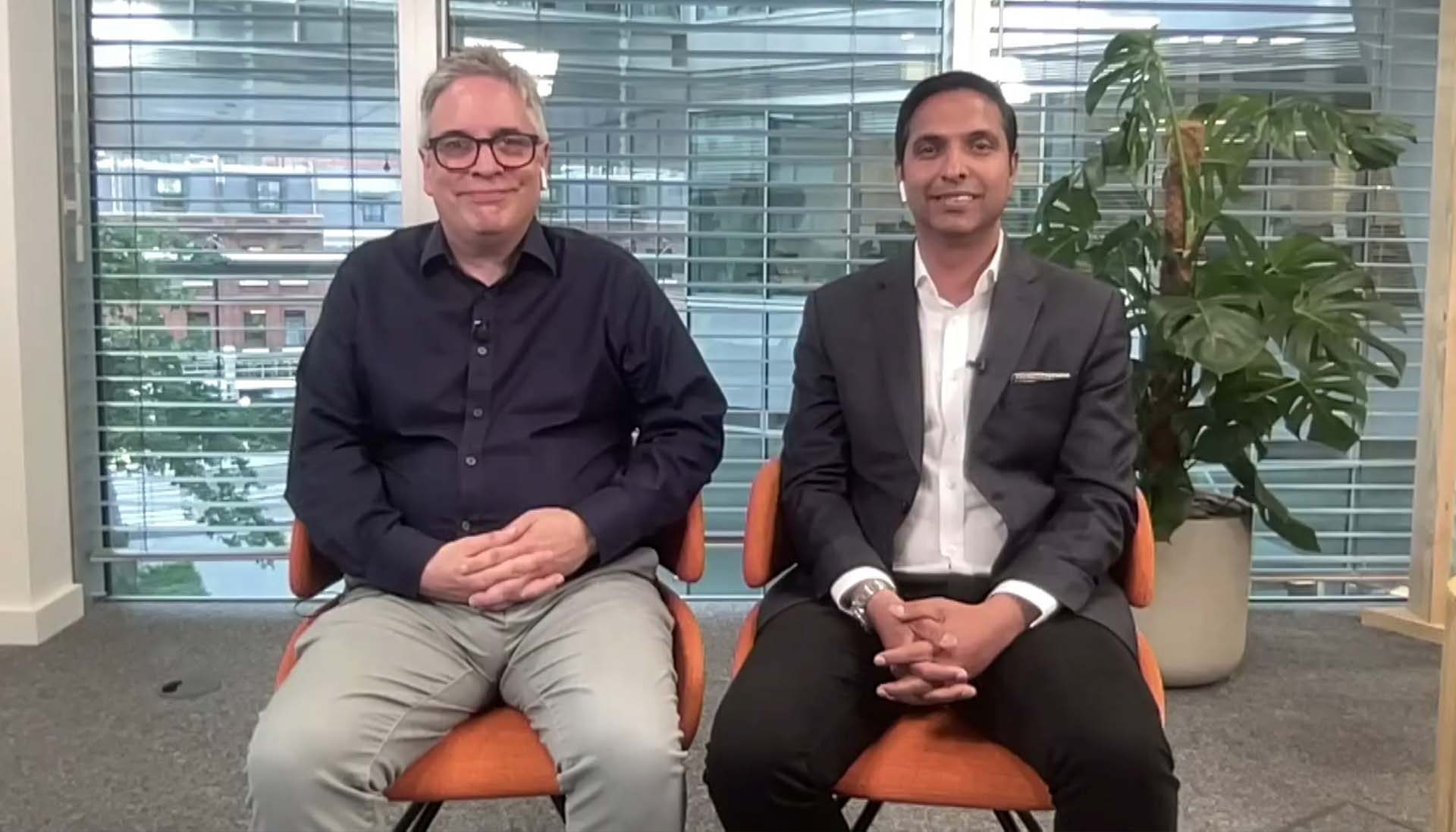 INFRA
INFRA
 INFRA
INFRA
 INFRA
INFRA
In the technology industry today, one of the biggest conversations taking place is how to continue to be agile and scale while also continuing business growth under any circumstances.
That type of example is illustrated well when it comes to Onclusive Inc., which is both a carve-out and a roll-up that was originally incepted out of Kantar Group and needed to be set up as an independent company, according to Simon Ingram (pictured, left), senior vice president of technology at Onclusive.
“We had transitional service agreements with the parent company, 18 different agreements for different services, but we really had to stand on our own feet,” he said. “It’s like a divorce, where you have to move out of the house, you have to get your own, new friends, your new suppliers. And, obviously, one of our great friends here were Persistent, who were … the golden thread partner in helping us stand up the business post-transaction.”
Ingram and Rajasekar Sukumar (right), senior vice president and head of Europe at Persistent Systems Ltd., spoke with theCUBE industry analyst John Furrier during a CUBE Conversation at SiliconANGLE Media’s livestreaming studio. They discussed how Onclusive focused on its core objectives and business processes while forging the right partnerships. (* Disclosure below.)
It’s undoubtedly a challenge to transform a company without causing disruptions. There are a lot of complexities to carve out in setting up a new company, with so many moving parts within a private equity landscape, according to Sukumar.
“It’s important to forge the right partnerships, bring in partners like us with the right cultural fit to be able to navigate the waters,” Sukumar said. “There are several things involved here, and we have a good foundation in digital engineering. That’s our primary focus that really allows us to be ahead of the technology trends and stay closer to our customers.”
Sometimes companies need someone to orchestrate all of the moving parts and bring harmony to the whole ecosystem, according to Sukumar. On Onclusive’s side, the number one concern was to establish a new brand and move five offices in the first six months in different parts of Europe. The company also had to create separate networks and isolate security-wise from the previous company.
“The challenges are relentless. They come thick and fast, and they come at you from all angles,” Ingram said. “You are also dealing with big changes for our staff and our other suppliers. Change is always disruptive to a business. You have to … manage the way through that, and you need a supplier who is in it for the long game.”
The partnership with Persistent Systems has been valuable due to its continuous and reliable nature, according to Ingram.
“We just need somebody who’s got the ability to grow with us and who understands that … the runbook evolves,” Ingram said. “You have to have guiding principles that you work to. And, of course, you try to work to standard processes and methodologies, but … we were rolling up six or seven different businesses with different cultures, different ways of working, different go-to-markets, different supplier stacks.”
Companies can have a target operating model in mind, but it’s the journey to the target operating model where Onclusive really needed Persistent, according to Ingram. But it’s easy to get caught up in the complexities involved in set-up, which can distract management from scaling the business and providing value for shareholders and customers, according to Sukumar. That poses three broad complexities.
“The first is really the complexity of transition. So we talked about the [transition services agreement] … it’s time-bound, significant risks on cost and operations and the private equity activity, which never stops,” Sukumar said. “So, you need a well-defined playbook and significant prior experience to be able to execute this at scale and at pace.”
The second is complexity of choice, which involves the various platforms, tools and technologies involved, and the consideration that when multiple companies are brought together, so too are people from various backgrounds and cultures. It poses some important questions, including what one’s IT strategy is — for example, choosing the right model, such as multicloud deployment with Amazon Web Services and Azure.
“Finally, it is the complexity of orchestration. How do you bring the whole dance together? It’s about people, the platforms, the required customization for the business,” Sukumar said. “This really needs specialist skill sets and a very, very strong partner ecosystem to be able to bring it together.”
Here’s the complete video interview with Rajasekar Sukumar and Simon Ingram:
(* Disclosure: Persistent Systems Ltd. and Onclusive Inc. sponsored this segment of theCUBE. Neither Persistent Systems and Onclusive nor other sponsors have editorial control over content on theCUBE or SiliconANGLE.)
Support our mission to keep content open and free by engaging with theCUBE community. Join theCUBE’s Alumni Trust Network, where technology leaders connect, share intelligence and create opportunities.
Founded by tech visionaries John Furrier and Dave Vellante, SiliconANGLE Media has built a dynamic ecosystem of industry-leading digital media brands that reach 15+ million elite tech professionals. Our new proprietary theCUBE AI Video Cloud is breaking ground in audience interaction, leveraging theCUBEai.com neural network to help technology companies make data-driven decisions and stay at the forefront of industry conversations.